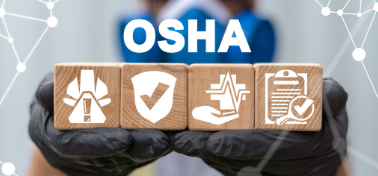Employers Must Have an Updated IIPP; New Guidance Regarding Forgiveness for PPP Loans

COVID-19 Considerations For Injury Illness Prevention Program (IIPP)
Q. Does an employer need to have an IIPP?
A. Yes. California law requires every company doing business in California to have a written and effective IIPP (Labor Code § 6401.7 and 8 CCR § 3203.).
Q. What does an IIPP need to include?
A. An IIPP must include the mandatory elements required under the IIPP regulation. However, it is the actual implementation of the IIPP that Cal/OSHA frequently scrutinizes when they are on the scene. Without successful implementation, employers open themselves up to citations, no matter how thorough their written IIPPs.
Q. What is the required training under the IIPP?
A. The most basic and fundamental part of a company’s IIPP is its training program. As applies to COVID-19, section 3203(a)(7) requires training:
- (E) Whenever the employer is made aware of a new or previously unrecognized hazard; and,
- (F) For supervisors to familiarize themselves with the safety and health hazards to which employees under their immediate direction and control may be exposed.
Cal/OSHA recommends that training, at a minimum, be provided on the following topics regarding COVID-19:
- Cough and sneeze etiquette
- Hand hygiene
- Avoiding close contact with sick persons
- Avoiding touching eyes, nose, and mouth with unwashed hands
- Avoiding sharing personal items with co-workers (i.e. dishes, cups, utensils, towels)
- Providing tissues, no-touch disposal trash cans and hand sanitizer for use by employees
Q. Does an employer need to update their IIPP to take COVID-19 into consideration?
A. Yes. New Guidance (here) now states that, “For most California workplaces, adopting changes to their IIPP is mandatory since COVID-19 is widespread in the community.” (Emphasis added.) Every employer’s IIPP should be flexible, and is governed by what is known in the OSHA-world as a “performance standard.” The performance standard allows employers to create and tailor their IIPPs as necessary to effectively guard against hazards in each particular place of employment.
This will serve to create higher workplace morale, and will also serve as a CYA should Cal/OSHA pay a visit after a complaint or COVID-19 exposure.
Q. What should be included in an IIPP?
A. Cal/OSHA has provided updated guidance regarding what should be included in the IIPP (here).
Please contact us if you need assistance in developing your IIPP.
Additional Guidance on PPP Loan Forgiveness
The US Chamber of Commerce has released guidance regarding PPP loan forgiveness. The steps to determine your forgiveness amount are summarized below (the amount of forgiveness will ultimately be determined by your lender per the below steps):
STEP 1: What is your maximum amount of potential loan forgiveness?
Step 1A: The following expenses incurred or paid by you during the 8 week period (see Step 1B below to determine the 8-week period) are eligible for forgiveness:
Payroll Expenses
- Compensation (not exceeding $15,385 per employee) in the form of
- Gross salary;
- Gross wages;
- Gross commissions;
- Gross tips;
- Vacation;
- Parental, family, medical, or sick leave (other than leave for which the employer was reimbursed under the Families First Coronavirus Response Act);
- Allowance for separation or dismissal.
- Other
- Employer contribution for employee group health care coverage;
- Employer contribution for employee retirement plans;
- Payment of state and local taxes assessed on compensation of employees.
Non-Payroll Expenses
- Mortgage interest payments for the business on real or personal property (debt incurred before February 15, 2020);
- Rent or lease payments for the business on real or personal property (lease in force before February 15, 2020); and
- Utility payments for the business for electricity, gas, water, transportation, telephone, or internet access (service began before February 15, 2020).
Step 1B: Your 8 week period is the period during which expenses must be incurred or paid to be forgiven:
- The 8 weeks (56 days) beginning on the day the PPP loan was disbursed; or
- For borrowers with a biweekly (or more frequent) payroll schedule, the 8 weeks (56 days) beginning on the first day of the first pay period following the PPP loan disbursement.
STEP 2: What is your reduction due to reduced employment and/or reduced salaries and wages?
Step 2A: Did you decrease salaries and wages of any employees who earned $100,000 or less in 2019?
Your loan forgiveness will be reduced for each employee whose average pay (salary or hourly wage) during the 8-week period is less than 75% of their average pay from January 1, 2020 to March 31, 2020. The amount of the reduction in loan forgiveness is based on the amount of the reduction in pay.
Safe Harbor: You can avoid having loan forgiveness amount reduced if you restore an employee’s pay. Specifically, if the employee’s annual salary or hourly wage on June 30, 2020 is equal to or greater than their annual salary or hourly wage on February 15, 2020, then your loan forgiveness is not reduced.
Step 2B: Did you lose employees?
Your loan forgiveness will be reduced if the average number of weekly full-time equivalent employees (FTEs) during the 8-week period is less than the average number of FTEs during the chosen reference period. You can choose between the following reference periods:
- February 15 to June 30, 2019;
- January 1 to February 29, 2020; or
- In the case of a seasonal employer a consecutive 12-week period between May 1 and September 15, 2019.
The amount of the reduction is determined as follows: The average FTEs during the 8-week period is divided by the average FTEs in the chosen reference period above, resulting in a quotient. The quotient is then multiplied by the total amount of potential loan forgiveness after following Steps 1-2A above. The product results in the total amount of potential forgiveness.
Exceptions: You will not be penalized for any FTE reductions if either of the following occurred –
- You made a good-faith, written offer to rehire the employee during the 8-week period that was rejected by the employee; or
- The employee was fired for cause, voluntarily resigned, or voluntarily requested a reduction in hours.
STEP 3: What is your split between payroll costs and non-payroll costs?
Apply the 75% rule requiring that at least 75% of eligible loan forgiveness expenses go towards payroll costs.
Your maximum loan forgiveness amount may be reduced if your eligible non-payroll expenses exceed 25% of the total eligible expenses. The maximum eligible loan forgiveness is payroll expenses divided by 0.75.
Example: If your payroll expenses for the 8-week period equal $75,000, your loan forgiveness cannot exceed $100,000. Any more than $100,000 would mean your non-payroll expenses represent more than 25 percent of the total forgiveness amount.
STEP 4: Determine the forgiveness amount.
Your loan forgiveness will equal the smallest of the following:
- Your PPP loan amount.
- The maximum loan forgiveness amount from Step 1 less any reductions from Step 2.
- The maximum loan forgiveness amount from Step 1 where eligible payroll expenses equals or exceeds 75% of the total forgiveness (i.e. your eligible payroll expenses from Step 1 divided by 0.75).
Fixes to PPP Loan Program on the Horizon?
The House is expected to vote next week on the Paycheck Protection Flexibility Act, a bipartisan bill. The bill would make the following changes to Paycheck Protection Program loans:
- Allow forgiveness for expenses beyond the eight-week covered period. This would help businesses that are prohibited from opening their doors, or those that will only be allowed to open with restrictions;
- Eliminate restrictions limiting non-payroll expenses to 25% of loan proceeds;
- Eliminate restrictions that limit loan terms to two years;
- Allow businesses that take PPP loans to also take payroll tax deferrals; and
- Extend the June 30 rehiring deadline, to offset the effect of enhanced Unemployment Insurance.
Stay tuned!
 |
 |
| ERICA M. SOROSKY esorosky@ptwww.com (949) 851-7271 |
ERIN K. OYAMA eoyama@ptwww.com (949) 851-7288 |

